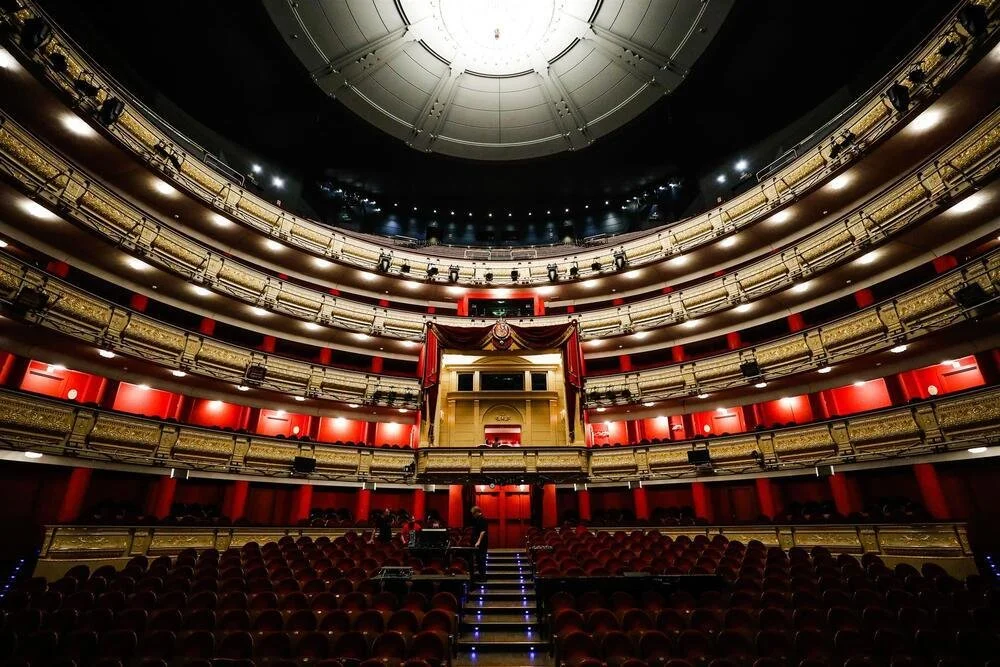Vienna State Ballet: choreographic decay and musical redemption, Teatro Real, Madrid, May 24th, 2025
Translated from “EL PAÍS”, May 24th, 2025
Critique by Roger Salas Pascual
Vienna State Ballet in Madrid: choreographic decay and musical redemption
On its third visit to the city, the company tried to impress with a turgid and immature programme. The musical part ensured the artistic level.
Is it possible to leave a theatre with broken wings, a devastated mood and lost hope? You can. And you shouldn't. For those who love and defend great ballet, the evening of the Viennese at the Teatro Real must have seemed like a disheartening endeavour. The applause was muted, there was a sense of confusion; everyone had different expectations.
Despite the commendable efforts of the in-house orchestra to empathise with the complex soundscapes of two such different pieces, despite the delicate interpretation of soprano Marina Monzó in the fourth movement of Mahler's symphony - convincing both vocally and dramatically - and despite the proven quality of many of the dancers, the Vienna State Ballet's performance was a failure; so far one of the most striking in the field of dance and ballet that the Teatro Real has experienced since its reopening.
The legitimate question arises: Did the programme makers really see the routine and mechanical execution of Van Manen's Concertante - and on top of that the exaggerated mess that Schläpfer built on Mahler's Fourth Symphony?
In its two previous guest performances at the Teatro Real, the Vienna State Ballet made an excellent impression and celebrated justified successes: in 2000 with Manon by Kenneth MacMillan (under the direction of Renato Zanella) and in 2017 with Le Corsaire by Manuel Legris, who was also the company's artistic director at the time. What was presented today almost makes these memories fade.
Weak in content, with a disoriented and obviously unmotivated cast, both Van Manen's work and Schläpfer's staged ego project - shamelessly narcissistic and solely for his own glory - have left a bitter aftertaste, almost of artistic poverty. This is unacceptable, especially in one of the most renowned opera and ballet theatres in the world.
It was well known that Schläpfer had failed as director of the Vienna Ballet, which ultimately hastened his departure. We often have to leave our innermost convictions at home in order to adapt to our hosts - it's called professional humility.
On 1 September, the Italian prima ballerina assoluta Alessandra Ferri (born in Milan in 1963) the management in Vienna. All hopes for a renewal and revitalisation of the company rest on her.
It is not just that Schläpfer's choreography is uninspiring - it is a completely misplaced effort that already marked the company's decline in the controversial premiere year of 2020. The symphonic ballet is not a catch-all for all sorts of things. It experienced its heyday in the 1930s and 1940s - until Massine -, was carried in its own way by Balanchine and later revitalised and reinterpreted by Uwe Scholz, particularly in Central Europe - Schläpfer was also active during this phase.
The realisation of entire symphonies for dance theatre is always a titanic task - which is why it is so rare. And Mahler's Fourth Symphony in particular is perhaps the least danceable of his entire symphonic oeuvre.
Around 60 dancers wander around the stage - frivolously dressed in ridiculous costumes - without knowing exactly what they are supposed to do. They enter, leave again, and support each other - but there is no artistic or thematic value whatsoever. The monumentality degenerates into emptiness.
After all the great composers, Mahler and Wagner are probably the most famous duo of ardent ballet despisers. But fate punished them: every day, somewhere in the world, a choreographer creates his own puppet show to their music - music that was clearly not written for dance. Some Wagner and Mahler works do allow for choreographic interpretation - but these are exceptions, and for that you have to be called Béjart, Neumeier or Petit.
The assertion that all music has an inner dance is nothing more than a pseudo-romantic cliché - and in the case of the ‘great ballet’, even pre-romantic, if you think of the visionary André Deshayes. In 1829, he staged an entire evening of Beethoven's Sixth Symphony at Her Majesty's Theatre in London (presumably in collaboration with harpist Bochsa).
For Mahler, the Fourth Symphony, which Schläpfer chose, is something like his pastoral - already misunderstood at its premiere in Vienna and later in Paris, where the composer Vincent d'Indy described it as ‘music for the Moulin Rouge, not for a concert hall’.
Dancing Mahler requires a refined, detailed concept (as Tudor showed in Dark Elegies) - and above all, an honest acceptance of his poetics without imposing artificiality.
The problems with Concertante lie on a different level: it is about rhythmic precision and about creating a vivid, sharp-edged geometric flow that supports what Frank Martin's music at times presents as almost dissected.
Roger Salas Pascual
El país





